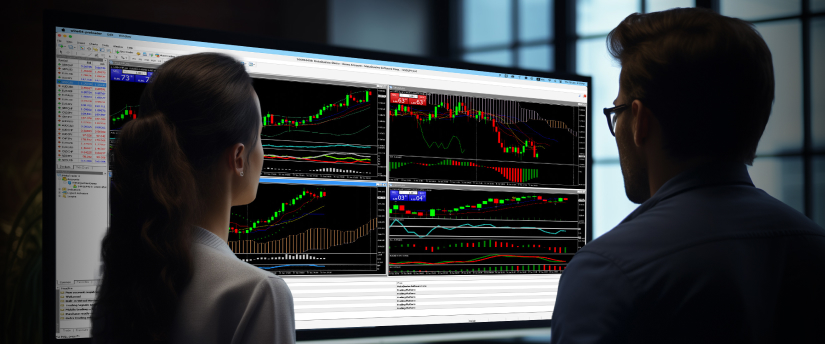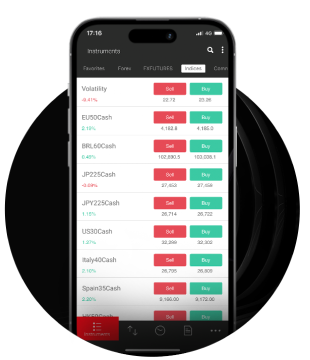Na história do trading de forex, histórias de sucesso rápido muitas vezes parecem boas demais para ser verdade. Mas para alguns traders, especialmente aqueles que começaram com objetivos modestos, o sucesso tornou-se real. Uma história que se destaca é a de Bill Lipschutz, que transformou um trabalho paralelo em uma carreira multimilionária.
Bill Lipschutz nasceu em 1956 em Farmingdale, Nova York. Ele teve um bom desempenho na escola e se formou no programa de arquitetura da Cornell, além de obter um MBA em finanças na escola de negócios da Cornell. Embora tivesse paixão pela arquitetura, ele não suportava o tempo necessário antes de poder trabalhar em projetos reais.
Na escola, Bill fazia negociações hipotéticas em papel em uma aula onde cada aluno começava com $100.000. Ao final do curso, ele havia transformado esse valor em $29 milhões, mesmo não havendo limites para alavancagem.
Início pequeno
Bill Lipschutz didn’t plan to become one of the world’s top currency traders. While studying at Cornell University, he inherited $12,000 worth of stocks when his grandmother passed away.
The portfolio wasn’t simple, it included many different stocks, which were held in many different places. The effort of selling these stocks, along with his earlier success in paper trading, most likely motivated him to start trading with real money.
While at Cornell, he started trading using the $12,000 he inherited. He spent a lot of time researching the markets, which became a core part of his trading approach. Research came naturally to Bill. He finished his MBA in 1982, before the internet, so research meant long hours in the library. In comparison, today’s trading research is so much easier.

The big loss
Ao longo de quatro anos na universidade, Bill transformou sua herança de $12.000 em $250.000. Ele compartilha essa história no livro The New Market Wizards: Conversations with America’s Top Traders. Quando perguntado o que aconteceu com esses $250.000, Lipschutz se refere à "reversão de Granville" em setembro de 1982.
O conselho do famoso consultor de mercado Joe Granville aos seus leitores foi contra sua posição comprada, e ele perdeu quase toda a sua conta em menos de uma semana, quando muitas pessoas se posicionaram contra ele. Apesar da perda, Bill não perdeu a confiança. Ele viu isso como “um grande erro”, manteve o foco, continuou a melhorar e, eventualmente, conseguiu um emprego na Salomon Brothers.
Joining the right broker
O próximo avanço de Bill aconteceu quando ele se juntou à Salomon Brothers, um dos bancos de investimento mais prestigiados da época. Foi lá que Bill realmente consolidou seu legado. Durante seu tempo na Salomon Brothers, ele supostamente gerou à empresa $300 milhões em um único ano apenas com trading de forex.
Salomon Brothers had an insular culture, known for developing its own traders and teaching them how to succeed. This approach applied to creating a foreign exchange department. While most companies would have hired a seasoned currency trader to lead such an effort, Salomon took a different route. They appointed a senior person from their bond arbitrage department to head the new FX department, even though he had no prior experience in FX.
Esta foi uma grande oportunidade para Lipschutz. Isso lhe deu a chance de se destacar em um departamento recém-criado, focado em um mercado que ele já conhecia bem. Bill também era a única pessoa na Salomon com experiência em opções, uma área que estava começando a se tornar amplamente conhecida no mundo do trading.
Lipschutz tornando-se independente
Em 1990, Bill deixou a Salomon Brothers, onde sua última posição foi chefe do Grupo Global de Opções de FX e da Mesa de Trading de FX de Nova York. Como já mencionado, ele supostamente gerou mais de $300 milhões na maioria dos anos para a Salomon Brothers. Após se afastar do trading por um curto período, ele retornou aos mercados em 1995 com sua própria empresa, a Hathersage Capital Management.
Bill Lipschutz’s trading strategy
The key focus of Lipschutz’s trading strategy is the management of the risk-reward ratio for each trade. He believes that the management of this aspect of trading can determine the success or failure of a trading system. In his opinion, the ideal risk-reward ratio is 3:1, which means that investors should focus on making $3 worth of profit for every $1 of risk. The core principles of his trading strategy include:
1. Trade judgement
Lipschutz enfatiza a importância de avaliar as probabilidades de sucesso ou fracasso antes de entrar em um trade. Um trade de alta recompensa com alta probabilidade de perda muitas vezes é pior do que um trade de baixo risco com alta probabilidade de lucro. Portanto, Lipschutz incentiva os traders a se concentrarem em avaliar o resultado provável de uma configuração de trade.
2. Position sizing
Lipschutz stresses that trade size is also a key part of any trading plan. It helps traders manage their risk and stick to their chosen risk-reward ratio. For example, if a trader has capital of $100,000 and a daily loss limit of $2,000, and they find a trading opportunity with a risk-reward of $1,000 risk to $3,000 reward per lot, they can enter into it with 2 lots and still stay within their risk limit.

3. Stop-loss and take-profit limits
A trader needs to set clear stop-loss and take-profit levels before entering a trade. This would help them stay disciplined and stick to their strategy, regardless of the trade’s outcome. These predefined limits also help traders avoid emotional decision-making, which is often where traders make costly mistakes.
Bill Lipschutz’s advice for beginners
Lipschutz é destaque em vários livros de trading conhecidos, incluindo ‘The Mind of a Trader: Lessons in Trading Strategy from The World’s Leading Traders’ de Alpesh B. Patel e ‘The New Market Wizards: Conversations with America’s Top Traders’ de Jack D. Schwager. Nestes livros, ele compartilha dicas valiosas para aqueles que estão começando sua jornada no trading, tais como:
1. Never underestimate time as a risk factor
Bill Lipschutz aconselha: “Se a maioria dos traders aprendesse a esperar 50% do tempo, eles ganhariam muito mais dinheiro.”
When you enter a new trade, it’s not just your money at risk, but also the time and attention that goes into monitoring it. So any trade with a longer time horizon carries greater opportunity costs, both in terms of the capital tied up and the attention it demands.
This makes it harder to manage multiple trades at once. So, a clear interpretation of this advice is to focus on one trade at a time and weigh all the costs related to it.
2. Absorb the pain that comes with the losses
According to Lipschutz, most traders experience beginner’s luck early on, but most give up when the losses start piling up. This is where most trading careers end. His advice to newcomers is to feel the pain of losses without letting it overwhelm you emotionally.
The reason for this is to avoid becoming numb to it. A mind that is numb to pain from financial losses tends to take bigger, reckless risks.

3. Never underestimate externalities
One of the biggest mistakes traders make is ignoring the million factors that can impact the outcome of a trade. External forces, like market sentiment and news events, can easily make or break a trading system.
That’s why it’s essential to account for these factors in your strategy. For example, a trader who relies on análise fundamental might still use análise técnica. It might not be their main technique, but there’s no harm in using it.
4. Make trading your passion
Quando o trading se torna sua paixão, você dedica mais tempo e energia para aprender o sistema que pode melhorar seu desempenho no trading.
5. Overconfidence is your biggest enemy
Lipschutz often reflects on his own journey – from rags to riches and back again – as proof that Forex trading has the potential to change your life in either direction.
The outcome depends entirely on your actions. He stresses that overconfidence is one of the most dangerous traits a trader can have as it can lead to reckless decisions. In contrast, consistent discipline forms the foundation for long-term success.
Aviso de Isenção:
Estas informações não são consideradas aconselhamento de investimento ou recomendação de investimento, mas sim uma comunicação de marketing.
















